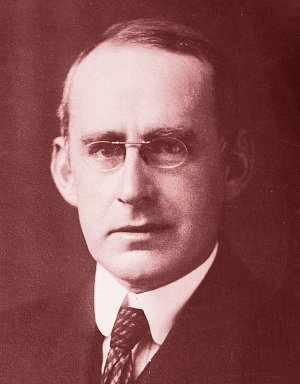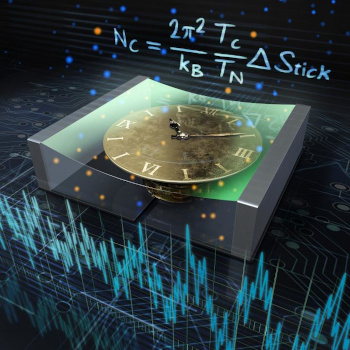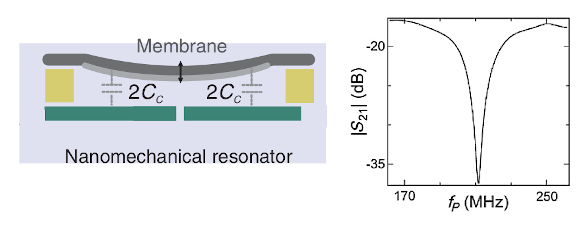Entropy and Timekeeping
July 19, 2021
A typical
household uses too many expendable (
primary cell)
batteries. There are so many of these that my
township, which had its
residents segregate all batteries for
special disposal, now requires that just
automotive batteries,
nickel–cadmium (NiCad) batteries, and
lithium batteries be segregated. It advises that "household batteries can be placed in
regular trash." While
wall clocks are now battery operated, I'm fortunate in having a recessed
wall outlet above the
kitchen sink at which an
AC operated clock resides.
This clock probably uses less than a
watt of power to
mechanically move its
analog hands, and it's a good example of the
Second Law of Thermodynamics in several ways. First, the Second Law of Thermodynamics, the
entropy law, states that
physical processes waste
energy and
wind-down, an
idiom that relates to
spring-wound clocks. The
motor of my kitchen clock is likely just 60%
efficient, so it's
warm to the
touch. The clock also makes a tick-tock
sound that's just
audible in the
quiet of the
night. The energy lost in
heat and sound means that the clock is adding to the entropy of the
universe.
Clocks and the Second Law of Thermodynamics are also connected though the
idea of the
arrow of time first elucidated by preeminent
physicist,
Arthur Stanley Eddington (1882-1944), who also provided
observational verification of
Einstein's theory of general relativity. Everything in the universe becomes
disordered as
time increases, and this allows us to distinguish between the past and future and identify the direction of time.

Physicist, Arthur Stanley Eddington (1882-1944).
Eddington also provided observational verification of Einstein's theory of general relativity by observing the bending of starlight around the Sun during solar eclipse of May 29, 1919.
Astrometry was primitive in 1919, so Eddington's evidence in confirmation of relativity was tenuous, but sufficient to convince physicists of his era. A 1979 computer-assisted re-analysis of his original eclipse plates confirmed his conclusions.[1]
(United States Library of Congress, Prints and Photographs Division, image ggbain.38064, via Wikimedia Commons, modified for artistic effect.)
My kitchen clock, the
accuracy of which is derived from the
frequency of the AC power lines, is
a few seconds a day. However,
atomic clocks have an accuracy that exceeds 10
9 seconds per day. The second is
now defined as the "duration of 9,192,631,770
periods of the
radiation corresponding to the
transition between the two
hyperfine levels of the
ground state of the
caesium-133 atom" (at absolute zero). I wrote about a
ytterbium atomic clock in an
earlier article (Ytterbium Atomic Clock, March 16, 2012) and also about a
thorium-229 nuclear clock with an accuracy of
one part in 1019 (
Thorium Nuclear Clock, March 26, 2012). That's an accuracy of a tenth of a second over the
age of the universe.
A team of physicists and
materials scientists from the
University of Oxford (Oxford, United Kingdom), the
Austrian Academy of Sciences (Vienna, Austria),
Lancaster University (Lancaster, United Kingdom), and the
Vienna University of Technology (TU Wien, Vienna, Austria). have recently published a different aspect of the thermodynamics of timekeeping.[2-4] They created a model clock based on a
vibrating nanoscale membrane, and they demonstrated that it generates more entropy as its precision is increased. This has the consequence that hotter clocks are more precise. Their study, published in
Physical Review X, is the first time that a measurement has been made of the entropy generated by a minimal clock.[4]

Skilled artist at work.
Artists' conceptions of scientific research are often exceptional, as this image illustrates.
One of the more famous representations of clocks in art is The Persistence of Memory, a 1931 painting of melting clocks by Salvador Dalí (1904-1989), presently on display at the Museum of Modern Art (MoMA).
Physical chemist and Nobel Laureate, Ilya Prigogine (1917-2003) asked Dalí whether this painting was inspired by Einstein's theory of relativity. Dalí replied that it was a representation of Camembert cheese melting in the sun.
(Lancaster University image, Also available here. The Persistence of Memory can be viewed on the Museum of Modern Art website.)
Clocks are
machines; and, like every machine, they are subject to the laws of thermodynamics. Since the most accurate clocks operate through use of greater energy, we should suspect a fundamental connection between accuracy and energy consumption.[4] More precisely, since
fluctuations limit clock accuracy at a fundamentally level, this suggests a connection between entropy and the accuracy of clock ticks.[2-3] In the present study, the research team demonstrated that a simple mechanical clock based on a
nanoscale thickness vibrating membrane, the vibration of which is driven by heat, increases entropy as its precision is increased.[3]
Previous studies of
quantum clocks found a
linear proportionality between their accuracy and their entropy production, but it was unknown whether this applied to
classical clocks as well.[2-3] Furthermore, such a classical clock
experiment is difficult, since keeping track of the input and output energy is difficult.[3] This first experimental investigation of the thermodynamics of a classical clock showed that it works the same as the quantum clocks; that is, entropy and accuracy are linearly related.[2]
The clock designed for the experiment was a
silicon nitride membrane suspended over
metal electrodes for excitation of vibrations.[3] The vibrating membrane was a few tens of
nanometers thick and 1.5
millimeters in size, and each
oscillation of the membrane produced one electrical clock tick.[3-4] To measure the thermodynamics of the process, the membrane was heated while the flow of energy through the clock was measured electrically.[4]

On the left, a schematic diagram of the silicon nitride nanoresonator used in the clock entropy experiments. Shown in the image are the capacitances used for resonance detection. The resonant spectrum is shown on the right. (Potions of fig. 2 of ref. 2, licensed under the Creative Commons Attribution 4.0 International license.)
Increasing the heat caused an increase in the vibration
amplitude, which improved the precision of the clock.[3] It was found that the entropy, as determined by the lost heat, increased linearly with the precision, in agreement with the result from quantum clocks with a different
proportionality constant.[2-3]
The experiment confirmed that the more energy consumed by a clock, the more accurate is its timekeeping.[4] To make the clock twice as accurate, twice as much heat needs to be applied.[4] According to
theory, an ordinary
wristwatch with an accuracy of
one part in ten million must consume at least a
microwatt of power per tick, while it actuality it consumes just a few times this amount.[4]
References:
- Daniel Kennefick, "Not Only Because of Theory: Dyson, Eddington and the Competing Myths of the 1919 Eclipse Expedition," arXiv, September 5, 2007.
- A. N. Pearson, Y. Guryanova, P. Erker, E. A. Laird, G. A. D. Briggs, M. Huber, and N. Ares, "Measuring the Thermodynamic Cost of Timekeeping," Phys. Rev. X, vol. 11, no. 2 (May 6, 2021), article no. 021029, DOI:https://doi.org/10.1103/PhysRevX.11.021029. This is an open access article with a PDF file here
- Michael Schirber, "Keeping Time on Entropy's Dime," Physics, vol. 14, no. 54, May 6, 2021.
- Why hotter clocks are more accurate, University of Lancaster Press Release, May 10, 2021.
Linked Keywords: Household; primary cell; battery (electricity); township (United States); resident; hazardous waste; special disposal; automotive battery; nickel–cadmium (NiCad) battery; lithium battery; municipal solid waste; regular trash; wall clock; AC power plugs and sockets; wall outlet; kitchen; sink; mains electricity; AC; watt; mechanics; mechanical; analog clock; hands (clock); Second Law of Thermodynamics; entropy; physics; physical process; energy; idiom; mainspring; spring-wound; electric motor; energy conversion efficiency; efficient; heat; warm; touch (sense); sound; hearing range; audible; silence; quiet; night; universe; idea; arrow of time; physicist; Arthur Stanley Eddington (1882-1944); observational astronomy; observational verification; Einstein's theory of general relativity; randomness; disorder; time; tests of general relativity; bending of starlight; Sun; solar eclipse of May 29, 1919; astrometry; computer-aided; computer-assisted; analysis; photographic plate; United States Library of Congress; Wikimedia Commons; accuracy; utility frequency; frequency of the AC power lines; utility frequency stability; a few seconds a day; atomic clock; second definition; frequency; period; electromagnetic radiation; atomic electron transition; hyperfine structure; hyperfine level; ground state; caesium-133; cesium-133; ytterbium; atomic nucleus; parts-per notation; one part in 1019; age of the universe; materials science; materials scientist; University of Oxford (Oxford, United Kingdom); Austrian Academy of Sciences (Vienna, Austria); Lancaster University (Lancaster, United Kingdom); Vienna University of Technology (TU Wien, Vienna, Austria); vibration; vibrating; nanoscopic scale; nanoscale; acoustic membrane; Physical Review X; artist's impression; artists' conceptions; science; scientific; research; clock; art; The Persistence of Memory; oil painting; melting; Salvador Dalí (1904-1989); Museum of Modern Art (MoMA); physical chemist; Nobel laureate in Chemistry; Ilya Prigogine (1917-2003); Camembert cheese; sun; machine; fluctuation; quantum clock; linear; proportionality (mathematics); classical mechanics; experiment; silicon nitride; metal; electrode; nanometer; millimeter; oscillation; schematic diagram; nanoresonator; capacitance; detection; spectrum; Creative Commons Attribution 4.0 International license; amplitude; physical constant; theory; wristwatch; microwatt.